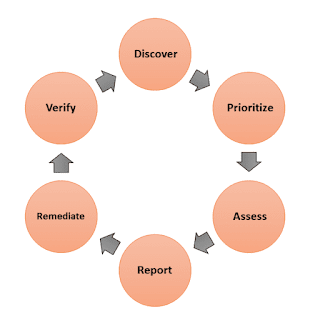Life Cycle of Vulnerability Management

What is Vulnerability Management? Vulnerability management is a program that addresses common cybersecurity weaknesses in an organization's software, hardware, and network. These vulnerabilities can be exploited by hackers to steal data or do a brute-force attack. Therefore, vulnerability management helps to identify, close, and track these types of vulnerabilities and prioritize them in order of high risk to low risk. Life Cycle of Vulnerability Management 1. Discover This step involves the examination of operating systems, web services, hardware, web applications, and existing security patches to discover new vulnerabilities in the computer system. 2. Prioritize After the discovery of vulnerabilities, these are prioritized based on their nature which is informational, low, medium, high, and critical. The critical vulnerabilities should be dealt with first in the order of precedence. 3. Assess Now, assess all the vulnerabilities based on their severity. For example, low-risk vu...

